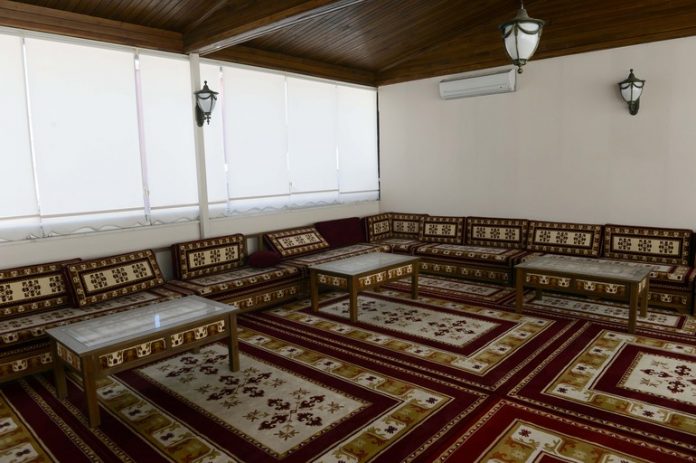Now I want to explain the current political situation from a more personal standpoint. But in embarking on a new topic, I would like to note that there are a handful of books and documentaries about Gülen’s organization. I haven’t referred to any of those sources while writing this or the next few columns. Instead, I want to concentrate on explaining what I’ve learned about Gülen’s cult from my direct experience of Turkish society.
Foreign observers, many not asking in good faith, are questioning the extent of the ongoing effort to extirpate Fethullah Gülen’s adherents from Turkish state institutions. They think the numbers are too large, that there can’t possibly be that many Gülenists in state institutions, and that overall Erdoğan is only trying to “consolidate his power,” to use a cliché repeated endlessly by the likes of the NYT and the Guardian.
I can state simply that those observers are mistaken not only on the question of numbers, but also (and more fundamentally) about the extent of Gülen’s network. The statistics are the easy part. There are more than three million civil servants in the Turkish state. So at the moment something like 90K have been either suspended or fired outright. That’s three percent of all Turkish civil servants.
Furthermore, consider this: Gülen has long been focused on education, and that includes the public education sector. Education is useful not only for identifying potential recruits, attracting adherents, and indoctrination, but also for providing ample and reliable cash flows, as demonstrated by the emergence of a massive private education sector (including cram schools and courses) in Turkey. This is because weak public education was long coupled with a stringent university entrance examination system, which created a large niche for a profit-motivated private education sector. Gülen identified this decades ago and began to build his presence in both Turkey’s public and private education sectors.
This is why his network has come to comprise thousands and thousands of teachers, whether in regular schools or cram courses. At the same time, this is a small portion of a huge sector. So if thousands of such public sector teachers were to be fired because of their Gülenist connections, at a purely macro-economic level would this be a difficult issue to overcome? No, because there are tens of thousands of other teachers waiting for public sector jobs. And many among them have been victimized by the rise of the Gülenist establishment, for in exam after competitive exam, the questions were stolen by Gülenist operatives in high positions and distributed only to their own adherents. As a result, generations of Gülenist teachers kept being unfairly leapfrogged over their possibly more deserving peers. Last but not least, unemployment in Turkey currently stands at more than eight percent.
The education sector is also an excellent place to begin explaining my personal knowledge of Gülen’s network. When I moved to Istanbul in 1999, the first job I had was teaching at a private English-language dersane (cram school) in Şirinevler, a working-class neighborhood in the city’s western suburbs near Atatürk airport (1). It was soon after I began working at that school, that I began to hear the students and teachers talking about someone named Fethullah Gülen. The school turned out to belong to him; indeed, it was one of many other dersane-type schools that he owned in Turkey’s expansive and expensive cram school sector.
Naturally I didn’t know much about him at that time — except for the fact that he had fled to the U.S. because the Turkish state, and especially the military, saw him as a threat. That much I understood, because all around me I saw evidence of the Turkish state’s oppression of Turkey’s religious citizens. At the dersane, for example, many of the students were head-scarved young women studying English in hopes of going abroad for university education since they were at that time banned from attending higher education in Turkey.
At the dersane, over time I became acquainted with some of the students, and it was an entirely normal occurrence for students to give religious texts to their teachers (essentially all foreigners from Christian societies). So students gave me, too, a copy of Said-i Nursi’s Risale-i Nur, translated into English, plus one or two of Gülen’s works. I would understand later that this was entirely normal because Gülen had emerged from Nursi’s earlier religious movement. After scanning those texts I understood immediately that both Nursi and Gülen were concerned with finding some sort of reconciliation between Islam and modern science. Because I was familiar with similar trends in American Christianity, but at the same time not at all interested in religion, I put the books on a shelf, where they have remained all this time.
Apart from what the students and teachers said or promoted, there was yet another aspect of the school that reflected the connection with Gülen, and it was a press linkage. Because the school was in Şirinevler, it was a convenient place for the daily Zaman (Zaman Gazetesi) to send its journalists to in order to work on their English (2). Consequently, a number of the students were actually Zaman employees. Years later, one of the students that I met at that time became a lead editor of one of Gülen’s other leading newspapers. And my acquaintance with the various other Zaman employees resulted, several years later, in my being interviewed by a Zaman reporter for my status as a foreigner who had adapted well to Turkish society (3).
It is worth emphasizing that the Zaman employees I met were invariably nice, polite, hard-working people as well as strong believers. There was nothing to spark concern other than the fact that the paper they worked for was Fethullah Gülen’s. At the time, I never witnessed any sinister behavior. But of course, it was also the case that we all believed the standard story about Gülen — that he was a moderate, Sufi-inspired religious leader who represented a positive development for Islam. All the same, I never felt any need to learn more about Gülen or spend more time amongst his people. Instinctively I understood that his organization was in the nature of a cult.
On the other side of the coin, some features of the English-language school where I worked did catch my notice. Generally, the students or teachers were not treated well by the top management of the school, and the director in particular. The teachers, because they were foreigners, were paid a salary that was high relative to what Turkish teachers made (although this is no longer true). On the other hand, most of the teachers were not professionals but the back-packer type of young Westerners. The students were easily the best part of the school. Because most of the students were coming from Turkey’s working classes or lower-middle classes, and were trying to learn English for a specific educational or professional goal which they regarded as of vital importance, they were basically attentive, hard-working students.
But at the same time I couldn’t understand how the school could possibly be making money. For one thing, the poor management and the ill treatment of teachers and students kept student numbers low. On that basis, the combination of high salaries for teachers and the lower-class fees paid by the students (with the Zaman journalists, as far as I knew, also getting a discount), suggested that there could not be much of a profit margin, if any. The only way for the school to keep operating was if it was receiving financial support from elsewhere. Even more surprising was the fact that the school was part of a chain of such schools — and as I observed in the following years, it was a chain that continued to expand. That observation was my first introduction to the finances of Gülen’s empire.
[to be continued ]
NOTES
(1) I will deliberately refrain from using the name of this dersane because little of what I shall be explaining can actually be proven. In fact, the official founder of this particular dersane (and the chain of cram schools it is associated with) has, in recent years, strongly rejected allegations that his companies have had any connection to Gülen; he has even claimed that his schools were competing against Gülen’s schools. This was followed by the sale of most of his stake in his chain of cram schools. At the same time, a cursory social media scan reveals that foreign teachers at this English-language school have remained convinced that the chain was connected to Gülen, and messages to that effect can be found from as recently as two years ago. As will be explained, this particular cram school was cooperating with Zaman when I was a teacher there in 1999-2000, and that cooperation was continuing as late as 2009. That would match the pattern exhibited by Gülen’s schools in the U.S., where work contracts advertised by Gülen’s schools are frequently awarded to companies owned by figures close to Gülen. All of this illustrates the basic problem when trying to identify who is cooperating with Gülen: lots of signs, plenty of rumors, but very little in terms of concrete evidence.
(2) Zaman newspaper, founded in the mid-1980s, was Gülen’s most important media organization. Its headquarters were near Şirinevler, only a kilometer or two up the E-5 highway, in a neighborhood called Yeni Bosna.
(3) An article that resulted from that interview used to be accessible on-line, but Zaman’s archives were taken off of the internet after the newspaper was shut down by the Turkish state.













